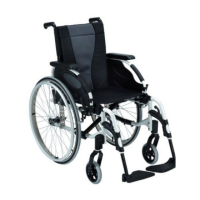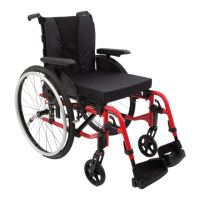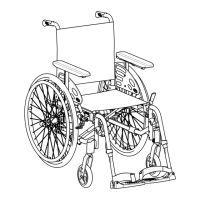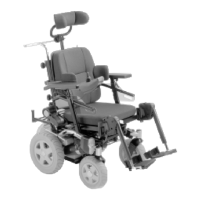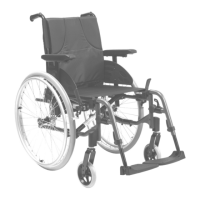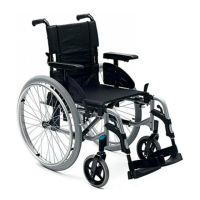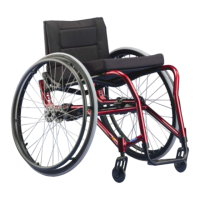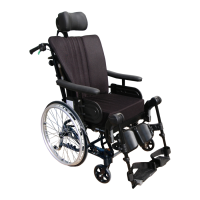How to fix a stiff castor on Invacare Action 3 Junior Wheelchair?
- Kkenneth12Jul 27, 2025
A stiff or stuck castor on your Invacare Wheelchair is often caused by dirty or faulty bearings. Clean the bearings or replace the castor.
How to fix a stiff castor on Invacare Action 3 Junior Wheelchair?
A stiff or stuck castor on your Invacare Wheelchair is often caused by dirty or faulty bearings. Clean the bearings or replace the castor.
Why does my Invacare Action 3 Junior Wheelchair not travel in a straight line?
If your Invacare Wheelchair isn't moving straight, it could be due to several reasons. One common cause is incorrect tire pressure in one of the rear wheels. Another potential issue is broken or unevenly tightened spokes. Also, check if the castor bearings are dirty or damaged, as this can also cause the problem.
Why is the rolling resistance so high on my Invacare Action 3 Junior?
High rolling resistance in your Invacare Wheelchair is often due to low tire pressure in the rear tires. Ensure that the rear wheels are parallel. If not, adjust them accordingly.
Why does my Invacare Wheelchair tip backwards too easily?
If your Invacare Wheelchair tips backwards too easily, it might be because the rear wheels are mounted too far forward. Another possible cause is that the back angle or seat angle is too large.
Why do the castors wobble when moving fast on my Invacare Action 3 Junior Wheelchair?
Castor wobble on your Invacare Wheelchair when moving fast can be due to too little tension in the castor bearing block or because the castor has worn smooth.
Crucial safety information for users and assistants to ensure safe wheelchair operation.
Information on essential safety devices and the importance of using original parts.
Information on the anti-tipper's purpose, activation, deactivation, and safety.
Important safety tips regarding tyre pressure, front wheels, and handling.
Detailed instructions for braking using handrims and with an assistant, including safety.
Step-by-step guide for safe transfers, emphasizing posture and avoiding tipping.
How to drive and steer the wheelchair, including finding the tipping point.
Procedures and safety advice for navigating steps and kerbs with or without assistance.
Safety guidelines and methods for ascending and descending stairs with assistants.
Safe techniques for using ramps and slopes, including gradient limits and control.
How to maintain stability and balance when leaning forwards or backwards.
Critical safety warnings regarding securing the wheelchair to prevent injury during transport.
Guidelines for vehicle transport, including restraint systems and safety checks.
Warnings about material deterioration and the importance of professional checks.
Safety precautions to take when identifying and reporting faults with the wheelchair.
A table listing common faults, their causes, and recommended repair actions.
Crucial safety information for users and assistants to ensure safe wheelchair operation.
Information on essential safety devices and the importance of using original parts.
Information on the anti-tipper's purpose, activation, deactivation, and safety.
Important safety tips regarding tyre pressure, front wheels, and handling.
Detailed instructions for braking using handrims and with an assistant, including safety.
Step-by-step guide for safe transfers, emphasizing posture and avoiding tipping.
How to drive and steer the wheelchair, including finding the tipping point.
Procedures and safety advice for navigating steps and kerbs with or without assistance.
Safety guidelines and methods for ascending and descending stairs with assistants.
Safe techniques for using ramps and slopes, including gradient limits and control.
How to maintain stability and balance when leaning forwards or backwards.
Critical safety warnings regarding securing the wheelchair to prevent injury during transport.
Guidelines for vehicle transport, including restraint systems and safety checks.
Warnings about material deterioration and the importance of professional checks.
Safety precautions to take when identifying and reporting faults with the wheelchair.
A table listing common faults, their causes, and recommended repair actions.
| Brand | Invacare |
|---|---|
| Model | Action 3 Junior |
| Category | Wheelchair |
| Language | English |
